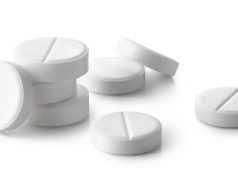Low-risk patients with severe, symptomatic aortic stenosis show similar clinical outcomes and valve durability
By Lori Solomon HealthDay Reporter
TUESDAY, Nov. 4, 2025 (HealthDay News) — Seven-year follow-up data show that transcatheter aortic-valve replacement (TAVR) and surgical aortic-valve replacement have similar clinical outcomes for low-risk patients with severe, symptomatic aortic stenosis, according to a study published online Oct. 27 in the New England Journal of Medicine and simultaneously presented at the 2025 Transcatheter Cardiovascular Therapeutics conference, held from Oct. 25 to 28 in San Francisco.
Martin B. Leon, M.D., from Columbia University Irving Medical Center in New York City, and colleagues conducted longer-term assessments of clinical outcomes and valve durability among participants in the PARTNER 3 trial. Low-risk patients (1,000 patients) with severe, symptomatic aortic stenosis had been randomly assigned to undergo transfemoral TAVR or surgical aortic-valve replacement. This analysis included follow-up through seven years.
The researchers reported that for the first primary end point (a nonhierarchical composite of death, stroke, or rehospitalization related to the procedure, the valve, or heart failure), the incidence was 34.6 percent with TAVR and 37.2 percent with surgery (difference, −2.6 percentage points; 95 percent confidence interval [CI], −9.0 to 3.7). For the second primary end point (a hierarchical composite of death, disabling stroke, nondisabling stroke, and the number of rehospitalization days related to the procedure, the valve, or heart failure), the win ratio was 1.04 (95 percent CI, 0.84 to 1.30). The incidence rates of components of the first primary end point were 19.5 percent for TAVR and 16.8 percent for surgery for death, 8.5 and 8.1 percent for stroke, and 20.6 and 23.5 percent for rehospitalization, respectively. At seven years, the mean aortic-valve gradients assessed by echocardiography were 13.1 mm Hg after TAVR and 12.1 mm Hg after surgery. Failure of bioprosthetic valves occurred in 6.9 percent in the TAVR group and 7.3 percent in the surgery group. The groups were similar with respect to patient-reported outcomes.
“A consistent finding in PARTNER 3 follow-up analyses has been an attenuation of the between-group difference in primary end-point events, which favors TAVR over surgery in the first year with no between-group differences apparent during longer follow-up,” the authors write.
Several authors disclosed ties to medical technology companies, including Edwards Lifesciences, which funded the study.
Abstract/Full Text (subscription or payment may be required)
Copyright © 2025 HealthDay. All rights reserved.








